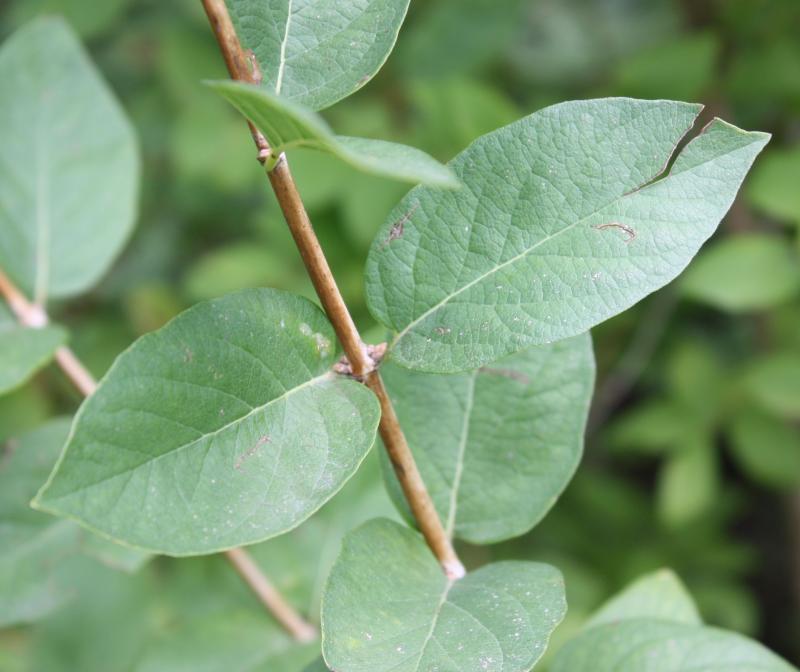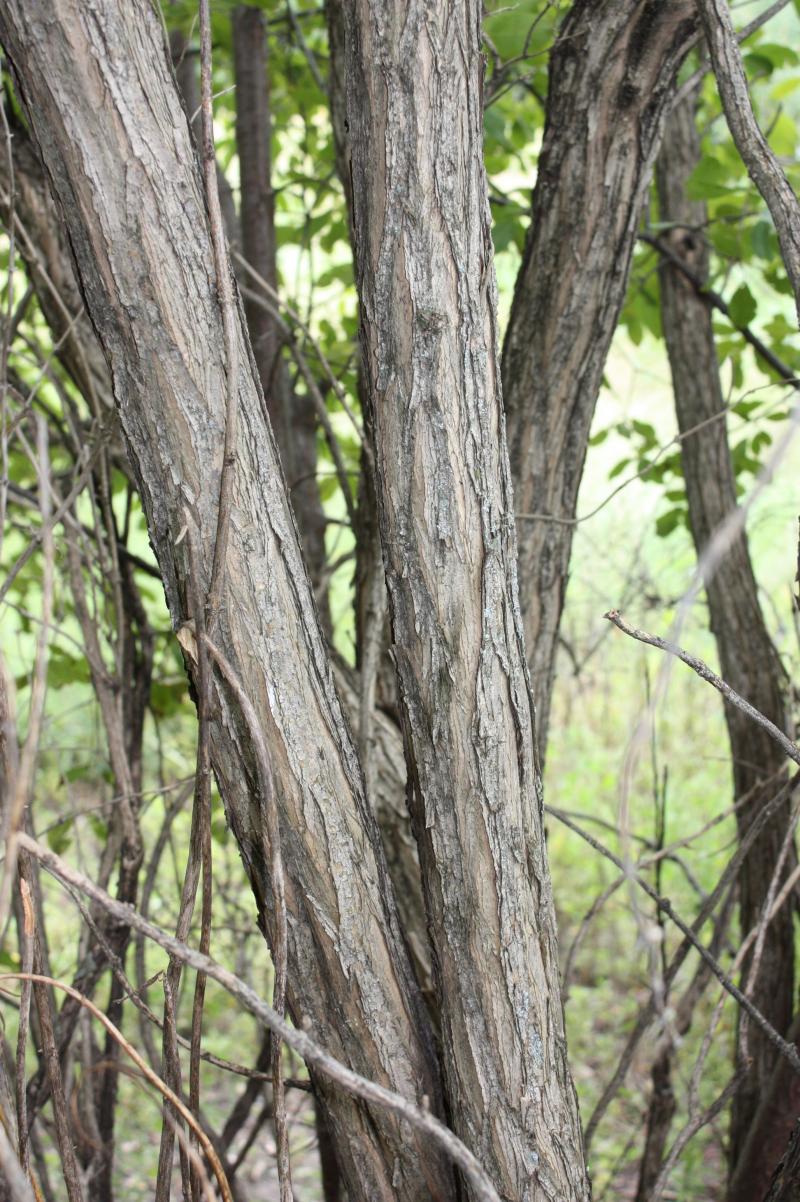
Written collaboratively by Peter Schaefer and David Graper.
Tatarian honeysuckle (Lonicera tatarica) was brought to North America from Asia in the mid-18th century for ornamental uses. In South Dakota it was also used as a windbreak species until the 1980s. At that time severe damage from the Russian aphid (Hyadaphis tataricae) rendered Tatarian honeysuckle undesirable for both windbreak and ornamental plantings. The aphid feeding causes the plant to develop masses of small, thin shoots, known as witches brooms, that are unsightly and detract from the natural growth habit of the plant. Although it has not been planted for 30 years, there is plenty of it around, mostly in areas where it is not wanted. It can sometime still be found available for sale but it is not recommended that you plant it in any location. It should be removed to maintain the functional and aesthetic qualities of residential and rural plantings, as well as to protect native landscapes.

Tatarian honeysuckle grows in a variety of habitats in its native range, and has proven equally adaptable in North America. It is spread primarily by birds that eat the small fruits and deposit the seeds in areas they have perched. As such, infestations tend to be concentrated in fencerows, hedges, windbreaks, woodlots and forests, and are also common in urban areas that are left untended. Similar to buckthorn, it tends to leaf out earlier in the spring and hold leaves later in the fall, lending a competitive advantage over native understory species. Once established, honeysuckle may completely occupy the understory of wooded areas, forming a dense understory canopy.
Description

Tatarian honeysuckle is a medium-sized shrub with many upright stems, generally not exceeding 10 feet in height. It has simple leaves which are oval in shape, 1 ½ to 2 ½ inches long (1/2 as wide), and have a smooth (entire) leaf margin. The upper side of the leaves are blue-green, with the underside whitish. Leaf arrangement is opposite. Current stem growth is smooth and green, becoming light brown/grey by winter.

The bark of older stems is light grey and composed of narrow, slightly shredding, vertical strips. The twigs/stems of Tatarian honeysuckle are hollow, which is one way to distinguish it from honeysuckles native to North America. Flowers occur in pairs from the leaf axils. They are about 1” long and tubular with 5 distinct lobes. Flowers are generally pink, but can range from white to red. The flowers are attractive to butterflies and humming birds but this should not be a reason to keep these plants in the landscape. Fruits are about ¼” in diameter and orange to red.
Control
As with other woody weeds, the best time to control honeysuckle is when it is small. Very small plants can be pulled by hand, while plants up to 2 inches in diameter can be pulled with a wrenching tool specifically designed for that purpose. Hand pulling of small plants is practical for small areas, such as fence lines, hedgerows or alleys in residential areas, however it is generally not the solution for control in rural areas. Seedling removal in large, rural landscapes is best accomplished with fire, where appropriate, or with herbicides. Where a broadcast application is necessary, a broadleaf herbicide such as triclopyr would be used in most instances. Remember to read herbicide labels before each use, and follow label directions.

Larger stems require treatment of individual plants, either through mechanical removal (cutting), girdling or basal herbicide application. Cutting or girdling the plant will result in vigorous sprouting from the stumps, which requires several cycles of follow-up treatment. As such, it is more effective to immediately apply herbicide (triclopyr or glyphosate) to the cut stump or girdled area. This will greatly reduce or eliminate sprouting. Another method is to simply spray the base of the stem with herbicide. In this case the product concentration must be higher than for foliar applications (25% for glyphosate; 8% for triclopyr).
Regardless of the method used to remove honeysuckle, it would be rare to achieve adequate control with one treatment. Stumps will sprout and birds will continue to disperse seeds, so close monitoring of treated areas is a must for several years. Correcting the conditions that allow for infestation is the best means of preventing further establishment of honeysuckle. In general, this would mean planting desirable, native species to occupy the sites where honeysuckle was removed. On some sites it may be appropriate to establish grasses that can then be mowed or burned every year. Of course prevention is the best means of control, which often means attending to disturbed sites prior to infestation of woody weeds.


